The UK should increase its naval presence in the Baltic Sea to strengthen deterrence and protect maritime supply routes to Estonia, according to a new report from Parliament’s Defence Committee.
The report urges the Ministry of Defence to base Royal Navy vessels in the region for longer periods to respond more quickly to grey zone threats and to reassure allies. These deployments would help secure vital sea lanes used to reinforce British troops in Estonia as part of NATO’s enhanced forward presence.
“By basing and operating assets more regularly for extended periods in the Baltic the UK could offer additional reassurance for allies, better protect the sea lanes of communication to reinforce UK troops in Estonia, be a greater deterrent against grey zone threats and accelerate any response to an actual incident,” the Committee wrote.
Since 2016, the UK has deployed a battlegroup of around 900 soldiers to Estonia under NATO’s deterrence posture in the Baltics. In the event of a crisis or conflict, that force is expected to increase to a full brigade of between 3,000 and 4,000 troops.
To test reinforcement plans, the Royal Navy conducted Exercise Baltic Express in April 2025, simulating the protection of military equipment being shipped to Estonia. The report describes the route as “critical, but vulnerable” in the event of war.
Further joint exercises with the UK-led Joint Expeditionary Force (JEF) took place in November 2024 under the name Joint Protector, designed to practise escalation from grey zone threats to full combat operations. The JEF, comprising ten northern European nations, retains the ability to act outside NATO command structures, enabling faster responses to regional crises.
“The Joint Expeditionary Force’s freedom to operate independently should allow it to be more responsive and agile in combatting grey zone threats,” the report said. “But it can only do this if it possesses credible, deployable capabilities.”
The report forms part of a broader warning from the Committee that the UK is increasingly exposed to grey zone activity, including sabotage, cyberattacks and disinformation. These tactics, it says, are being used by hostile states to destabilise societies and undermine conventional deterrence.
Chair of the Defence Committee, Tan Dhesi MP, said: “Grey zone threats bring war to the doorstep of each and every one of us. These attacks do not discriminate; they target the whole of our society and so demand a whole of society response, in which we all must play our part.”
The Committee’s recommendations align with calls for greater integration of military, civilian and industrial efforts to strengthen national resilience. It argues that forward deployment, credible capabilities, and closer coordination with allies will be essential to secure the UK’s eastern commitments.



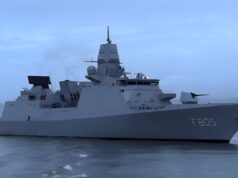
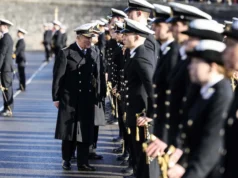

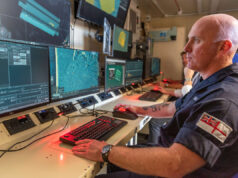
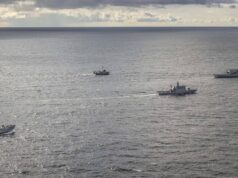
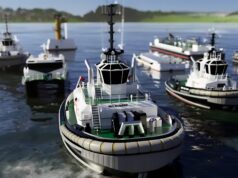
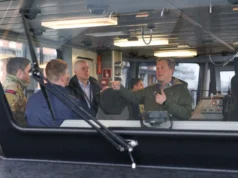
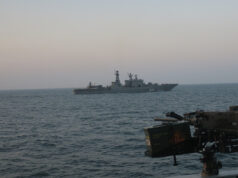
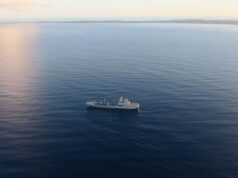
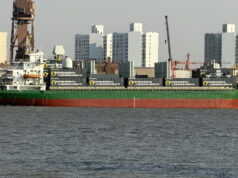

Fine, buy more bloody ships then!! It’s not rocket science
This is exactly what the FSL should reply with.
I’m sure the Baltic nations are more than capable of looking after their patch! I reckon they will be more than happy if we concentrate on the North Atlantic.
One of the biggest threats in the Baltics are mines. If only we had ships that could do MCM… The RN badly needs a MHPC Sloop that can independently operate in medium threat environments.
Where’s that T32 when you need it?
Is that not the point of Operation Baltic Sentry?
Down to 7 Frigates soon as the T23 in the gulf, Lancaster, is withdrawn.
Seven…
There were 17 when the Tories came to power in 2010.
Even more in 1997 when Labour started cutting T22s, then 3 young T23s.
Total escort force was around 40 in 1995.
There lies the problem.
All talk. No actual orders.
The 13 Type 26 and Type 31 just follows the usual trend, the new low becomes the benchmark.
And then it will be 6..5..4…really the test case is what happens to Kent..if Kent is decommissioned as all the others have been at 6-7 years after lifex then the RN has a problem.. because in that case by 2031 all the Type 23s will be gone and it will be down to 3 type 26 as its ASW fleet and 3-4 Type31s..
Fleet wise it’s going to be a big problem for both hulls and crewing from 2028 onwards..as the RN will need to crew two new frigates on first of class see trials as well as keep crewing operational vessels and it losses T23 hulls..imagine the 2028 picture.. T26 on first of class sea trials so not operational, T31 on first of class sea trials so not operational.. and the only operational T23s are St Albans, Sunderland, iron duke with Somerset going that year.
The peace dividend after 1989 was real and reasonable. The threat that had largely determined the size, equipment and location of UK forces for 45 years had collapsed. The damage was started by the 1998 SDR which urged a switch to expeditionary capability. Two predictably pointless wars in Iraq and Afghanistan ( did no one in charge remember Kut or the retreat from Kandahar?) frittered away the army budget on UORs. Then, without the provision of the necessary funding and ignoring the growing evidence that wars of intervention didn’t work, the expeditionary ambition led to ordering two carriers larger than any the RN had ever had. Faced with the financial crisis, facilitated by Browns decision to remove regulation from the BoE and made worse by his profligate welfare spending,, borrowing and selling assets in years of full employment, the coalition inherited a massive deficit. Several of their decisions were unfortunate but having to fund both carriers and overdue replacement of SSNs squeezed the equipment budget still further. Escort orders were delayed( although some of this was caused by the RN itself trying to work out what it wanted- hence TOBA and OPVs rather than frigates).
Belatedly, extra funding was made available under Johnson to address the equipment black hole, largely caused by overspends on the carriers and defence nuclear.
By 2030, the escort fleet will be in much better shape and the army re equipment programmes close to FOC.
If extra funding to meet the new NATO target is really forthcoming, force numbers could theoretically be increased quite substantially. I doubt that will happen- existing programmes like AUKUS and GCAP will hoover up funding, so any real increase in force.size will be modest at best.
I would still like to see a decision to re purpose one of the carriers to an ambitious role, reducing the need for MRSS and more F35s. This could free up useful funding for other more important assets.
What the present state of the 10 year equipment plan is, we have no idea. The last one in 2023 was a bit of a shambles but it had thanks to RN including unapproved programme costa and a massive increase in defence nuclear spending lurched back into large deficit. The DIP should clarify this in the autumn.
Hi Peter the 1998 SDR was actually a very good and reasoned review..infact it was the last threat based SDR. The issue was it was incorrectly funded and not fully implemented.. there were a number of reasons for this, but the biggest was probably a mix of the war on terror coming along and burning 60billion pounds as well as the fact capital investment was paused for a very long time in key areas such as SSN which then saw a massive need to invest in capital projects.. essentially while the army was burning money like water in Iraq and Afghanistan the UK was trying to build long overdue: air defence destroyers, SSNs, typhoon fighter squadrons, Martime patrol aircraft and the army ever pissing away around 700 million on the FRES program that never delivered a bean.
Most people forget that if the 98 SDR had not been undermind by a decade of none investment in capital expenditure 1987-1997, the war on terror and the treasury in the 2000-2010 period refusing to provide the required budget we would have had a fleet of 30 escorts.. instead of 19… the fact we are going to have about escorts 10 for 2028 is all on the Osborn Cameron government.
I think your view of New Labours performance on defence is very charitable. Whatever the merits of the 1998 defence review, it was entirely their decision to embark on ruinous wars of intervention which achieved nothing. They had a further 12 years in power after 1998 and signed the carrier contract in 2008, knowing there was insufficient funding.
I have little respect for Cameron’s mix of arrogance and ignorance( he messed up Libya and wanted boots on the ground in Syria) but defence was in trouble even before the 2008 financial crash. Faced with massive debt and falling business taxes, the coalition had little choice but to make savings. By 2017, the UK deficit had fallen to near zero.
The truth is that despite repeated SDRs, we have never defined clearly and simply what the necessary minimum forces we should fund are. That should be easy and once done determines what equipment we need to build over what period. The failure to achieve this is not solely the fault of politicians. How long did the navy spend trying to define the global combat ship? How long and at what cost did the army mess about with FRES? Service leadership has much to answer for, including the obsession with aircraft carriers at the cost of the rest of the surface fleet.
Hi Peter the reality was defence was in trouble from 1990.. essentially the peace divided was both to harsh and the money spent int the wrong way.. for governments.
All governments got it wrong.. but the SDR 1998 was pretty good, but no government actions were great..
The national debt left by Labour in 2008/9 was £800 billion. This was after the banks had been bailed out for £400 billion, which we’ve have apparently recovered some of by selling government stakes in the banks. UK national debt now is £2700 billion+. For context, that debt is more money than all the money ever borrowed since the Bank of England was created, all added together.
The idea that the Tories ‘inherited a deficit’ may be true, but they clearly made it much worse. The idea that there was no money is clearly nonsense though. The fact we have nothing to show for the £1900b of additional spending (other than a few dozen more billionaires) is entirely on the Tories.
An even bigger problem is crew numbers. Without some sort of “draft” the armed forces won’t have the personnel to crew these ships, fly the planes or put boots on the ground.
We talk about ship numbers but if you don’t have a crew it doesn’t matter how much they increase defence spending by
Baltic, North Atlantic, persian gulf, Indian ocean, Pacific… at what point will it dawn on them there are not enough ships to cover all these areas?
RN already overstretched – we need to seriously prioritise things. For normal peacetime patrolling I’d say there are enough NATO allies in the area as it is, though training and similar missions need to be considered. Fact is, the surface fleet of destroyers/frigates is woefully under strength.
In reality the Baltics would want a different type of combatant.. small, low manning, stealthy and heavily armed and large numbers..with a sacrifice in range and endurance. If the RN want to seriously support in the Baltic Sea it would need a different combatant.
Why are the Poles buying T31?
Heavy Russian and Chinese forces have been on the Baltic Sea, and I’m not sure it is deep enough for an SSN, another issue for the SSN might be the salinity – there isn’t much, so not sure if that would impact on their stealth.
Hi DB the bulk of the polish navy corvettes and mine warfare vessels around the 1000 ton mark..it’s T31 are to replace its 2 OHP frigates.
Perhaps a corvette class for patrol around the UK (including North Sea), the Baltic, the Med, Suez/Red Sea, the Persian Gulf? Co-production of an optimized existing design provided by an established/trusted allied shipbuilder? Less costly and less manpower intensive than full frigates, yet still capable, if appropriately outfitted. Certainly a NATO focused asset. Potentially feasible to build in other UK shipyards than Babcock and BAES? Surely that level of resource commitment could be feasible at 3.5% of GDP, even given other priorities and constraints? 🤔
To be honest if you wanted a home waters focused warship the rivers 2s are pretty good starting points.. 2000 tons, warship level survivability. It would ruin them as long range constabulary vessels as you would need to up the crew and reduce range and endurance.. but you could turn them into a competent western Atlantic, north and Norwegian Sea, Baltic combatant… put a 57mm on the front as well as 32 CAMM make a hanger for a wildcat and jobs a good one.. but it’s no longer an OPV…but if we are looking at war with Russia and China a regional warship is more use than an OPV.
Thailand have already built a River B2 variant with a 76mm, 2 x 30mm & 4 Harpoon SSM. Change Harpoon to NSM, fit a AAW capable radar & fit containerised CAAM (or box in some stand alone ExLS) for at least 24 CAAM. They can already handle a couple of underwater drones for anti mine work. The ships already have space for extra crew as allowances were made for potential RM contingent.
Correct, RN requires more warships in proportion to constabulary vessels. Corvettes may be a fiscally feasible pathway.